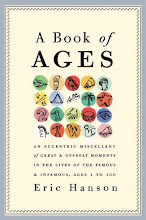On this date in 1933 Walt Disney released an animated short featuring three enterprising pigs. Homeowners, if you will. The perils of home ownership and finance were something Americans had become deeply aware of since the onset of the Depression four years earlier. The film is most famous for the song it introduced. "Who's Afraid of the Big Bad Wolf?" expressed a new, almost jaunty, hopefulness. FDR had been in office for 84 days. The wolf might still be at the door but people had a new song to whistle at him.
On the same day in Washington, the new Federal Securities Act was signed into law. One more item in the president's New Deal, it introduced the novel idea of regulating markets. There were now rules that large financial operators, banks, stockbrokers––wolves, if you will––were expected to follow. The American economy has been a less dangerous place in the generations since.
It seems funny to celebrate Walt Disney and Franklin Roosevelt in one breath, but both took the side of the little guy. Disney wasn't always the name on an enormous company. He began as an individual, a small businessman. He arrived in Hollywood penniless. He took enormous risks. He worked very hard and was incredibly talented, but he was lucky and he knew it. He was banking on the luck of his audience too. He chose a mouse for his hero, not a large animal, not a wolf. Disney appears at ages 21, 26, 35, 53 and 63 in A Book of Ages.
Franklin Roosevelt, whom capitalists sneered at and called a "traitor to his class," was born rich, but his ability to understand the fundamental importance of the little guy in the market equation probably saved American capitalism. Remember, this was a time when extremisms of one sort and another were taking over around the globe, in Japan and Germany, Italy and Russia and China. FDR understood that capitalism needs its customers to prosper too.
Roosevelt had never been poor but he understood hardship of another kind. Just as his political star was rising he contracted polio. He was 39, and he would never walk unassisted again. He went to Georgia to convalesce, and it was at Warm Springs that he met people of all classes and types who were in the same boat he was. He was no better and no worse than they were. Their courage helped him find his own. It was at Warm Springs that FDR learned the common touch that helped him––helped America––work its way through the hardest times the country had encountered since the Civil War. Franklin Roosevelt appears at ages 23, 39, 50, 53, 54 and 63 in A Book of Ages.
Wednesday, May 27, 2009
The Big Bad Wolf
Subscribe to:
Post Comments (Atom)





No comments:
Post a Comment